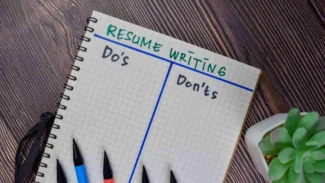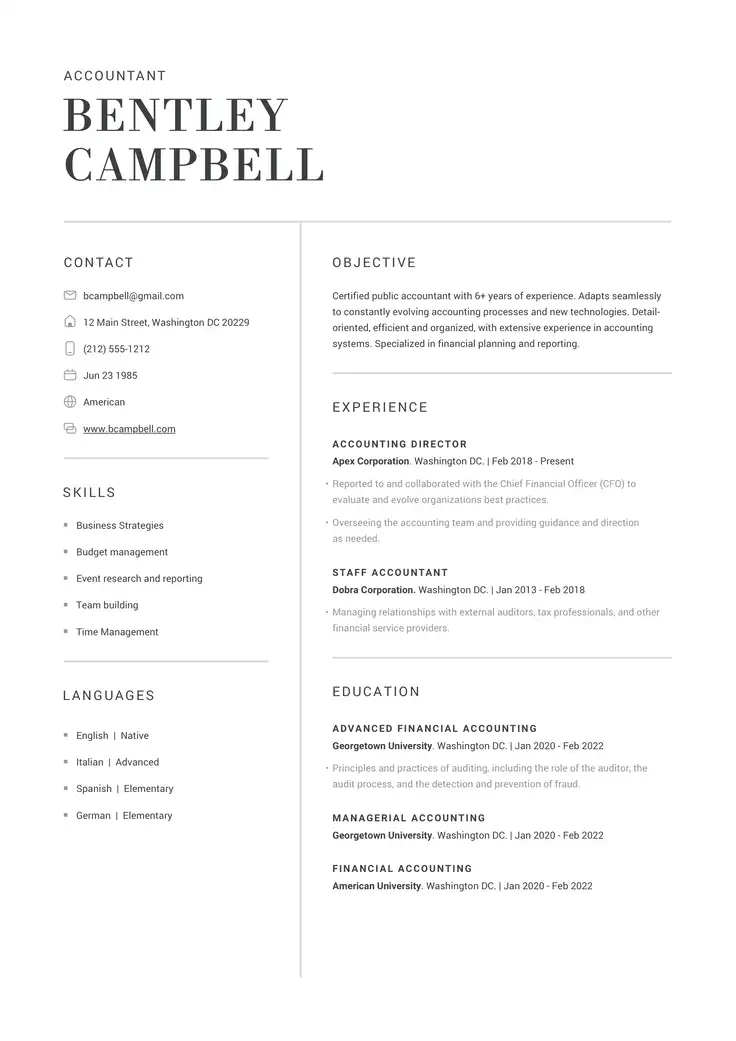Have you asked yourself, “Do employers like resumes with pictures”?
Adding a photo to your resume can be a smart choice, depending on where the position you want to apply for is located. You may be encouraged to add a photo to your resume, or told to avoid it.
In this article, we’ll talk about:
- Advantages and disadvantages of a resume with a photo
- How to add a professional photo to a resume
- Which countries prefer resume photos
You can also take advantage of our AI-powered resume builder to make adding a photo to your application easier.
Keep reading to find out specifically when and how to include a photo on your resume to make sure it increases your chances of landing the job.
How to Add a Photo to Your Resume
If you decide that a resume with a photo will benefit your job search the most, you have to understand:
- The type of photo you are going to use
- What size to make it
- Where to put the photo
Adding an image to your resume in the wrong location or one that’s too big or small can make it look unorganized, and if your photo is unprofessional, it can hurt your chances.
Review the following steps of adding a photo to a resume to add yours the right way.
1. Pick the right photo
The type of resume photo you choose largely depends on the position you are applying for. But most importantly, it must look professional, which means avoiding selfies and photos you’ve taken with friends or family.
While you will never take a photo making weird faces, consider:
- Maintaining a neutral expression with a slight smile for corporate positions to convey professionalism
- Wearing office attire for jobs in an office setting
- Using a front-facing headshot on a solid with a light background
2. Set the size
Space is precious in a resume, and the main focus should always be on the content, such as your skills, work experience, and qualifications.
Large photos will take up too much space, but small photos are difficult to see. The key is to strike a balance.
In general, a passport-size photo will be large enough to read without wasting space. Most templates you use will incorporate a 2” x 2” photo.
3. Place it in the right area on your resume
Most resume photos look best when placed near the top right of the page. This positioning allows the left corner to list your contact details and your resume objective or personal statement.
If you add a photo with a resume template, you can find the right spot for your photo easily.
Pros and Cons of Adding a Photo to Your Resume
Adding a photo can come with benefits but also some drawbacks. Take a look at why adding a professional photo to your resume can both help and hurt your chances.
Pros
- Photos can make a resume more marketable and stand out from the crowd.
- Photos are preferred in some visual and creative professions, such as writers, artists, marketers, models, and speakers.
Cons
- Images may put yourself at risk of discrimination. Your gender, age, ethnicity, religion, and physical characteristics should be irrelevant since they’re not related to your ability to perform the job.
- Images can take up valuable page space which could be better allocated to your skills and abilities.
- Images distract from the content on the page. Eye-tracking studies found that a recruiter spends 7 seconds reviewing your resume. Make sure those seconds are focused on your achievements, not your looks.
Still not sure whether to add a photo to your resume? Consider adding a professional headshot to your LinkedIn profile instead.
Cultural Considerations When You Add a Photo to a Resume
In the US, Canada, and the UK, adding a photo to your resume goes against anti-discrimination and labor laws.
Unfortunately, certain studies have shown there are both opposite-race and same-race biases when hiring managers review resumes with photos.
For this reason, in the United States and other countries like the United Kingdom, adding a resume photo isn’t common.
However, you’ll probably find resumes with photos, especially in more creative fields, in countries like:
Always verify employer and country-specific guidelines before including a photo, as requirements and preferences can vary.
Alternatives to including a photo on a resume
If you think that a photo on your resume will do more harm than good, there are a few other places you can include a photo and include a link on your resume instead.
- Your LinkedIn profile
- Your personal website
- Your social media pages (for applicable industries)
Key Points
So, do you think adding a photo will help your resume appeal to employers?
Adding a photo to your resume can be worth it if you keep in mind the information we’ve mentioned, such as:
- Applying for a position in countries such as Spain, France, or Germany
- Keeping your photo professional
- Ensuring it’s the right size
- Putting it in the right place on your resume
Remember, you can also add a photo to your resume online hassle-free by using our resume builder.
Resume Photo FAQs
Always choose a professional-looking photo for your resume. A front-facing headshot with a neutral expression on a solid, light background is ideal.
Make sure that the photo is high resolution and captures you from the shoulders up. Avoid casual selfies or group photos to maintain a professional appearance.
Your resume photo should be passport-sized, typically around 2” x 2”. This size is large enough to be clear without taking up too much space. It’s important to keep the photo well-positioned to maintain focus on your skills and experience.
Place your resume photo near the top right corner of the page. This position allows your contact details and personal statement to occupy the left side and gives you a balanced layout.
The placement helps keep the focus on your qualifications while still providing a professional visual element to your resume.
Related Posts





